SAP Access Control
Filter By
Browse By
- SAP Analytics and AI
- SAP Application Development and Integration
- All SAP Application Development and Integration
- SAP ABAP
- SAP ABAP Development Tools
- SAP ABAP Test Cockpit
- SAP API Management
- SAP BAPI
- SAP Basis
- SAP BRF
- SAP Business Application Studio
- SAP CMS
- SAP Design Studio
- SAP Development Tools
- SAP DevOps
- SAP EAI
- SAP EDI
- SAP Extension Suite
- SAP Fiori
- SAP Fiori Elements
- SAP Integration Suite
- SAP Low Code Application Development
- SAP Low Code Automation
- SAP Netweaver
- SAP Release Management
- SAP UI5
- SAP Web Application Server
- SAP Web IDE
- SAP Business Process Management
- SAP Center of Excellence
- SAP CIO
- SAP Customer Experience
- SAP Data and Data Management
- All SAP Data and Data Management
- SAP BW
- SAP BW/4HANA
- SAP Crystal Reporting
- SAP Data Archiving
- SAP Data Center
- SAP Data Governance
- SAP Data Integration
- SAP Data Migration
- SAP Data Quality
- SAP Data Services
- SAP Data Strategy
- SAP Data Visualization
- SAP Data Warehouse Cloud
- SAP DMS
- SAP Document Control
- SAP EIM
- SAP ETL
- SAP ETL Tools
- SAP HANA
- SAP HANA Administration
- SAP HANA Deployment Infrastructure
- SAP HANA Studio
- SAP Master Data
- SAP Master Data Governance
- SAP MDM
- SAP Enterprise Architect
- SAP Enterprise Asset Management
- SAP ERP
- SAP Finance
- All SAP Finance
- SAP Accounting
- SAP AR AP
- SAP Asset Accounting
- SAP Billing Systems
- SAP BPC
- SAP BRIM
- SAP Cash Management
- SAP Central Finance
- SAP Controlling
- SAP COPA
- SAP Cost Center Accounting
- SAP e-invoicing
- SAP FICO
- SAP Finance Automation
- SAP Financial Closing Cockpit
- SAP Financial Consolidation
- SAP Financial Planning
- SAP FX Risk
- SAP General Ledger
- SAP Global Tax Management
- SAP Hyperion
- SAP Order to Cash
- SAP Payment Processing
- SAP Profitability Analysis
- SAP Rebate Management
- SAP S/4HANA Finance
- SAP Universal Journal
- SAP Governance Risk and Compliance
- SAP Human Capital Management
- SAP Intelligent Technologies
- SAP Platform and Technology
- All SAP Platform and Technology
- SAP Business Technology Platform
- SAP Cloud Connector
- SAP Cloud Integration Platform
- SAP Cloud Migration
- SAP Cloud Platform
- SAP Cloud Providers
- SAP Cloud Strategy
- SAP Container Platform
- SAP Digital Asset Management
- SAP Digital Integration Hub
- SAP Digital Signature
- SAP HANA Enterprise Cloud
- SAP HEC
- SAP Hyperscalers
- SAP Infrastructure
- SAP Messaging
- SAP Smart Forms
- SAP Quality and Testing
- SAP Security
- SAP Spend Management
- SAP Supply Chain Management
- All SAP Supply Chain Management
- SAP APO
- SAP Asset Management
- SAP Business Network
- SAP Digital Manufacturing Cloud
- SAP Digital Twin
- SAP EWM
- SAP IBP
- SAP Inventory Management
- SAP Label Printing
- SAP Logistics
- SAP Manufacturing
- SAP Manufacturing Automation
- SAP MES
- SAP MII
- SAP MM
- SAP MRO
- SAP MRP
- SAP Order Management
- SAP Plant Maintenance
- SAP PLM
- SAP Production Planning
- SAP S&OP
- SAP SD
- SAP SPM
- SAP Supply Chain Planning
- SAP Track and Trace
- SAP Transportation Management
- SAP System Administration
What is SAP Access Control?
Improper access is a major security threat to SAP and other enterprise systems. The issue only gets worse as employees increasingly access their relevant applications remotely and on varying, often personal, devices. The goal of SAP Access Control is to ensure the right people are using the right software from the right device. It also helps track access information in case it needs to be reported later for compliance purposes or assessed for risk.
SAP Access Control’s key functions include:
- Risk analysis
- User provisioning
- Monitoring privileges
- Certifying authorizations
- Integration with enterprise systems
- Role definition and maintenance
Key SAP Access Control Considerations for SAPinsiders
What is SAP Access Control?
Improper access is a major security threat to SAP and other enterprise systems. The issue only gets worse as employees increasingly access their relevant applications remotely and on varying, often personal, devices. The goal of SAP Access Control is to ensure the right people are using the right software from the right device. It also helps track access information in case it needs to be reported later for compliance purposes or assessed for risk.
SAP Access Control’s key functions include:
- Risk analysis
- User provisioning
- Monitoring privileges
- Certifying authorizations
- Integration with enterprise systems
- Role definition and maintenance
Key SAP Access Control Considerations for SAPinsiders
- Quantify how improving user access and identity management impacts the bottom line. Most governance, risk, and compliance (GRC) organizations surveyed for our recent User Access and Identity Management for SAP S/4HANA report are facing budget constraints. That can make it hard to invest in software like SAP Access Control, but you can build the business case by finding those areas where unauthorized access can be costly. Added costs can come from cyberattacks, fraud, compliance-related fines, and rework to address audit issues. The cybersecurity threats are real — over a quarter of respondents noted having an access-related security breach in our April 2021 Securing the SAP Landscape Against Cyber Threats report.
- Audit your user access landscape. First, gain an understanding of which users are accessing which systems and why. Then, survey your users and identify which roles need which systems. These steps can help you be more efficient in integrating your access across your technology footprint.
- Integrate user access and identity management across your technology stack as part of your migration. Respondents to our latest User Access and Identity Management survey who worked for leading organizations were much more likely to integrate user access and identity management as part of digital transformation and integrate identity management across their heterogeneous application landscapes. These actions can help you optimize investment in software like SAP Access Control and create a holistic user access and identity management strategy.
- Centralize user access and identity processes to maximize your next technology investment. Centralizing user access and identity management can provide benefits that reduce risk, enable compliance, and make securing your systems easier. However, you must first unify the process by which you identify users and grant access to systems, no matter the business area or solution. That will make any technological investment more valuable when implemented.
1218 results
-

How to Setup Demand Planning in SAP Advanced Planning and Optimization
Published: 21/May/2020
Reading time: 21 mins
SAP Advanced Planning and Optimization, demand planning allows a business to perform forecasting of their materials while considering all the factors that affect the demand. Demand planning is periodic and contains multi-step processes such as data gathering, statistical analysis, reviewing market intelligence reports, and performing adjustments against budgeted forecast to drive material requirements planning. SAP…
-

Spotlight: Implementing SAP BusinessObjects GRC 10.0 Solutions
Published: 25/January/2012
Reading time: 10 mins
SAP’s Frank Rambo comments on guidelines to follow and pitfalls to avoid when implementing SAP BusinessObjects GRC 10.0 solutions. To provide some answers to possible challenges you may have during an implementation of SAP BusinessObjects GRC 10.0, I interviewed Frank Rambo, director of the GRC practice unit within SAP’s Customer Solution Adoption (CSA) organization, about measures...…
-

Integrate Policy Management into Your Global Compliance Portfolio
Published: 07/August/2014
Reading time: 12 mins
Discover how to use policy management with key elements of SAP Process Control to respond to risk events in your organization. Understand the ways in which policy management can be integrated into functional business processes. Key Concept SAP has developed a global compliance solution as part of Process Control 10.0 and 10.1. Managing company-wide policies...…
-
-

Sarbanes–Oxley: Seven Steps to Ensure Your Internal Controls Cover Your Risk
Published: 15/September/2003
Reading time: 9 mins
As the deadlines approach, does your SAP financials team have a plan in place for compliance with the Sarbanes–Oxley Act (SOA) of 2002? No? That’s not unusual, as many companies are struggling to learn what system and process changes the Act will require. But where do you begin this learning process? The author provides a...…
-

Tips on GRC 10.0 implementation & maintenance: Technical advice from Deloitte’s Kurt Hollis (Q&A transcript)
Published: 01/March/2013
Reading time: 16 mins
How can you prepare now for optimal SAP GRC 10.0 performance, and what steps can you take to prevent problems post-rollout for your GRC 10.0 landscape? GRC 2013 speaker and Deloitte expert Kurt Hollis took questions on March 7 in our Compliance Forum discussion thread, moderated by Matt Moore, conference producer, GRC 2013. You can…
-

Repetitive Cost Accounting in a Production and Process Order Environment
Published: 27/February/2015
Reading time: 21 mins
Learn how to configure and use product cost collectors (repetitive) to capture and control production and process order costs. Key Concept A hybrid order type for production moves the cost object from the production or process order to a product cost collector. This enables the use of orders for control of production and the aggregate...…
-

Benchmark SAP Application Controls to Increase Testing and Documentation Efficiency
Published: 15/March/2008
Reading time: 17 mins
See how to use your SAP system’s table logging functionality to support a benchmarking strategy for application controls. Key Concept On the technical side, many companies are confused about the impact table logging might have on performance. They confuse database-level table logging with application-level table logging and the performance impact of logging master and transactional...…
-
-

How to Validate Segregation of Duties Results
Published: 13/September/2011
Reading time: 20 mins
Upon first running segregation of duties (SoD) reports in SAP BusinessObjects Access Control, management staff can become overloaded with data and assume that the results simply cannot be correct. It is then the responsibility of the owners of SAP BusinessObjects Access Control to prove that the reports are accurate. Step through the process that SAP...…
-

mySAP CRM Analytics Harnesses SAP NetWeaver BI Analytical Capabilities
Published: 01/February/2007
Reading time: 25 mins
mySAP CRM Analytics, a group of tools offered with mySAP CRM and SAP NetWeaver BI, can help you optimize your company’s customer data. Learn about the mySAP CRM extraction mechanism and delivered analysis tools you can use with your data. Then, explore the standard tool sets available, including customer analytics, product analytics, sales and service...…
-

Perform Decentralized Periodic User Access Reviews with SAP BusinessObjects Access Control 5.3
Published: 11/August/2009
Reading time: 23 mins
SAP BusinessObjects Access Control identifies and prevents access and authorization risks in cross-enterprise IT systems to prevent fraud and reduce the cost of continuous compliance and control. The User Access Review (UAR) feature of SAP BusinessObjects Access Control 5.3 automates and documents the periodic decentralized user access review by business managers or role owners. It...…
Featured Experts
-

Akash Kumar
Associate General Manager, HCL
Become a Member
Unlimited access to thousands of resources for SAP-specific expertise that can only be found here.
Upcoming Events
Related Vendors
Your request has been successfully sent


